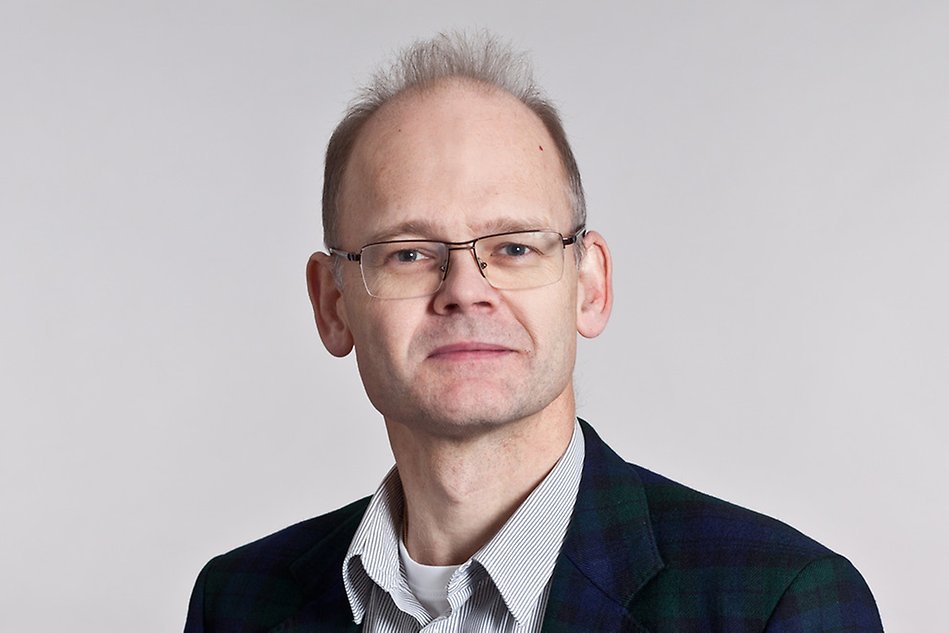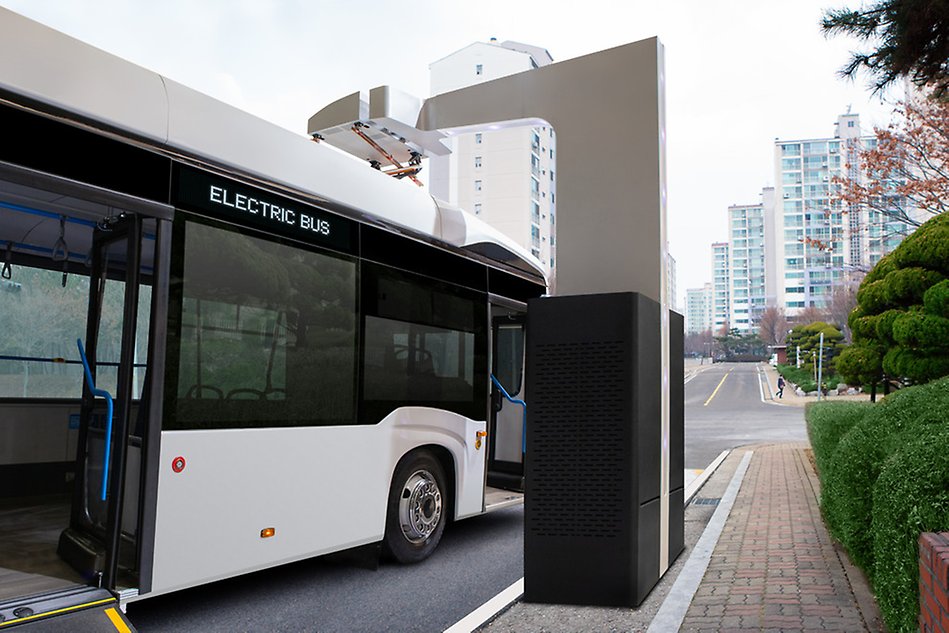Professor’s portrait: He explores the road towards a sustainable society
Environmentally driven innovation calls for contributions on several different levels: engineering, strategic leadership, and political policy instruments. As newly appointed Professor in Innovation Sciences, Thomas Magnusson study all these levels – preferably in close collaboration with industry.
”Environmental performance is not primarily a win for the buyer, but for society at large.”
Thomas Magnusson, professor in Innovation Sciences
When Thomas Magnusson wrote his Master’s thesis at Halmstad University in the 1990s, environmentally driven innovation was becoming a buzz concept. He decided that this would be his focus area – and since then has never strayed. Today, he is appointed Professor of Innovation Sciences, and his research interests still lie within the field of sustainable innovation.
“When I started researching the area, the focus was on the engineering and technology – how to make environmentally friendly products by choosing materials and designs suited for dismantling, recycling, and reuse.”

Thomas Magnusson has a Bachelor's degree from the Halmstad University’s Programme in Innovation Engineering and a Master's degree in Industrial Organization and Economics with a focus on innovation. He completed his doctoral studies at Linköping University.
It wasn’t long before Thomas Magnusson started realizing that it wasn’t enough that the designers strived to consider environmental issues. The dedication to sustainability had to permeate the entire organization, including management.
“Environmental issues and technical choices have to be considered in relation to costs and the client’s needs and desires. There are always conflicts and that is why it has to be up to management to decide what part the company wishes to play in the battle for sustainability.”
Thomas Magnusson talks about externalities – an economics term for something that doesn’t affect the seller, or the buyer directly, but instead has an effect on a third party.
“Environmental performance is not primarily a win for the buyer, but for society at large. Innovative technologies always has disadvantages to already established technologies, since structures, systems, and mindsets are adapted to the latter. Sustainable innovation faces challenges regarding both externalities. When you develop a new product or service it can be good for the society, but the specific buyer might not be prepared to pay for it. In cases like that, political intervention is called for.”
”Environmental issues and technical choices have to be considered in relation to costs and the client’s needs and desires. There are always conflicts and that is why it has to be up to management to decide what part the company wishes to play in the battle for sustainability.”
Thomas Magnusson, professor in Innovation Sciences
Biogas and heavy electrical vehicles in focus
When Thomas Magnusson received his Master’s degree, Halmstad University didn’t offer a doctoral education. Instead, he enrolled in PhD studies at Linköping University, where he defended his doctoral thesis in 2003. He then remained in Linköping up until today. In his research, he has identified three different dimensions connected to sustainable innovation: product development, strategic management issues, and political policy instruments. Environmental innovation often calls for substantial contributions from both politicians and the public sector, as well as collaboration between the private and public sectors.
Lately, a large part of Thomas Magnusson’s research has been focused on analyzing the transition towards a more sustainable society, often in cooperation with businesses and authorities. Two areas have been in focus: biogas and the electrification of transportation. He had been working at the Biogas Research Center which is funded by the Swedish Energy Agency, Linköping University, and external partners.
“We have examined how the Swedish market for biogas was created and how it is currently being reshaped. My research group is trying to show that markets don’t exist independently but appear in the interaction between different actors. We usually say that it has to do with three different aspects: money, talk, and action. Developing something new obviously requires money, both in the form of investments, and paying customers. The talk component refers to advertising, information, and lobbying. In sustainable innovation it is important to show how the solution can become an important part of a sustainable society, to create an image of the end goal. Last, but not least, the action-component has to do with proving that what you want to do actually works. To show the user that he or she can count on the availability of the innovation – to make available vehicles that run on biogas and to ensure safe delivery of the gas. All this goes hand in hand. Problems in the delivery chain will be reflected in the talk-component, causing problems in profiling the innovation as a solution for the future.”

Thomas Magnusson studies the electrification of vehicles, especially heavy vehicles such as buses.
Interplay between private and public as new technology is developed
Thomas Magnusson’s research has shown that public actors, for instance municipalities and public transport authorities, have been central to create an initial demand for biogas, while at the same time functioning as producers of the biogas. In that way, they have laid the foundation for the rather complex systems that are required in order to make biogas available on the consumer market. Interaction with the Swedish government and the European Union have also played an important role in the process. When studying the electrification of vehicles, especially heavy vehicles, Thomas Magnusson has also seen examples of how established companies make offensive decisions on the implementation of new technology.
”One example is when Leif Johansson, former CEO of Volvo, sometime in the year 2006 announced the decision to turn what was then precommercial projects into commercial products. It’s easy to think that it is new companies that stand for changes in technology, and there are of course smaller actors who offer this kind of solutions, but when it comes to the development and production of heavy vehicles, it is a difficult area to enter, and because of that the industry leading-companies needed to take the lead.”
It was the private sector that drove the product development forward, but according to Thomas Magnusson, there is an ongoing negotiation between private and public interests as to who is responsible for the investment costs that the needs for charging of electric vehicles bring.
About Thomas Magnusson
Thomas Magnusson was born in 1970 in Gråbo in Lerum municipality just outside Gothenburg. He received a technical Bachelor's degree as an Innovation Engineer at Halmstad University, where he also got a technical Master's degree in Industrial Organization and Economics with a focus on innovation.
There was no doctoral education in Halmstad when he finished his Master's year, so Thomas Magnusson went on to Linköping University where he defended his dissertation in 2003. In 2010, he became an associate professor, and in 2019 Professor of Industrial Management at Linköping University.
In 2020, he moved back to Halmstad University and became a Professor of Innovation Science and director of studies for postgraduate education in Innovation Science.
Competition between new technologies
Sometimes new technologies compete with each other. This is for instance the case with biogas- and electric vehicles.
“City buses have been vital when it comes to establishing biogas, but now electricity might be a better solution for the busses. That means that biogas needs to win market shares in other areas. Once again, we need politics to play its part. We know that several different options are needed in order to replace fossil fuels, but when it comes to making detailed decisions it’s not always easy”, says Thomas Magnusson and exemplifies:
“When it is time for a region to procure public transportation services, they can make a political decision regarding what fuel to be used, or to leave the choice to the bus operator.”
In a project in collaboration with Östgötatrafiken (a public transportation company) and Tekniska verken (a municipal company that works with for instance waste management, electricity and water supplies) Thomas Magnusson and his colleagues developed a number of scenarios displaying how Tekniska verken’s biogas production would be affected if Östgötatrafiken chose to run their buses on electricity. Today, there are several electric city buses in Linköping, and Tekniska verken are instead delivering the biogas to industries as a replacement for fossil gas.
A perfect fit
Last year Thomas Magnusson was appointed Professor in Industrial Management at Linköping University, but the professorship in Innovation Sciences at Halmstad University lured him back to his alma mater.
“The School of Business, Innovation and Sustainability is a perfect fit for me. I want to support the development of academic research in Halmstad and align it with the education. It’s very exciting. In the early 1990s when I was a student here, the University did not have much research. Today several research environments are established with PhD programs in amongst others Innovation Sciences, and I can sense a drive and a curiosity that appeals to me. In the future, I would like for us to create even larger and more long-term research programs.”
Text: Lisa Kirsebom and Christa Amnell
Photo: Istock and Magnus Karlsson
Read more
The article in Swedish: Professorsportättet: han studerar vägen till det hållbara samhället External link.
External link.

